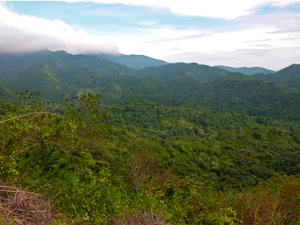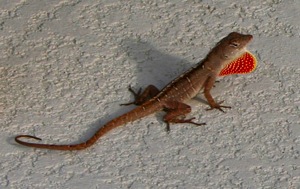
Conclusions and Future Directions
The results of this analysis provide confounding evidence of the utility of ecological niche modeling techniques. The inability of this analysis to adequately predict distributional range of Anolis sagrei within the American Southeast is intriguing. This may be explained by two hypotheses: 1)the physiological tolerances of Anolis sagrei are wider than the climate in their native range, 2) post-colonization populations of Anolis sagrei have evolved increased physiological tolerances that have allowed for further spread. Future work will be necessary to evaluate these hypotheses.
With populations of Anolis sagrei already on the island of Oahu (Lever, 2003) and high climatic suitability predicted throughout the island chain, it is likely that the remaining islands within Hawai’i will be invaded. Hawai’I has high levels of endemism with over 90% of native species found only in Hawaii. (Kay and Palumbi, 1987) Further research will be vital in understanding the mechanisms of colonization and establishment in order to protect these unique native species.
The use of ecological niche modeling techniques can be an important tool in understanding species invasions although further work must be done to include other ecological and species community data. With larger high-resolution datasets, increased predictive ability may be gained. This is the first step in minimizing the economic and ecological impacts of invasive species.

